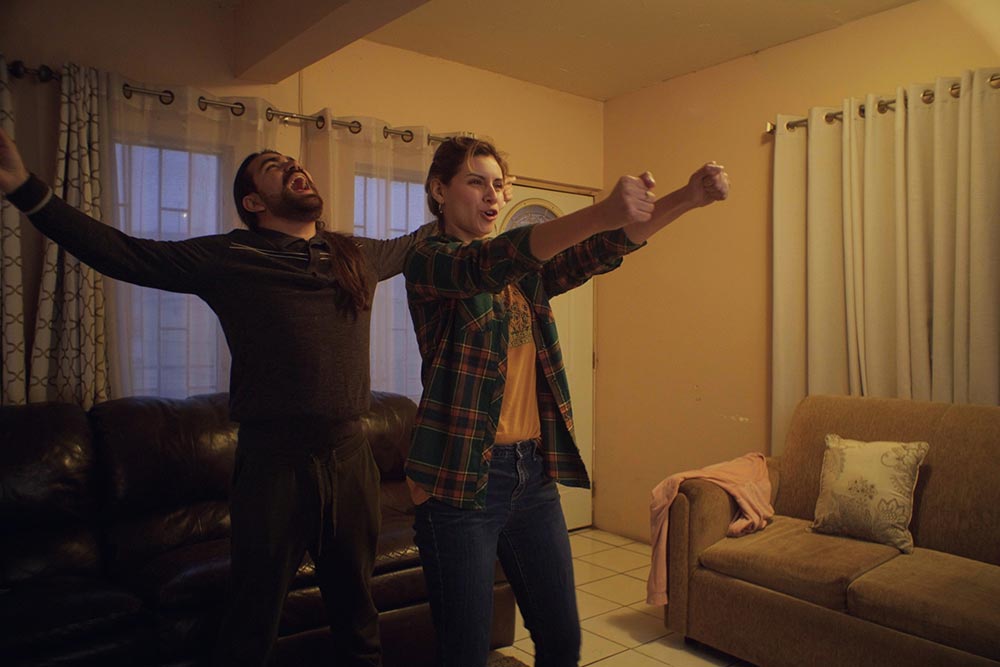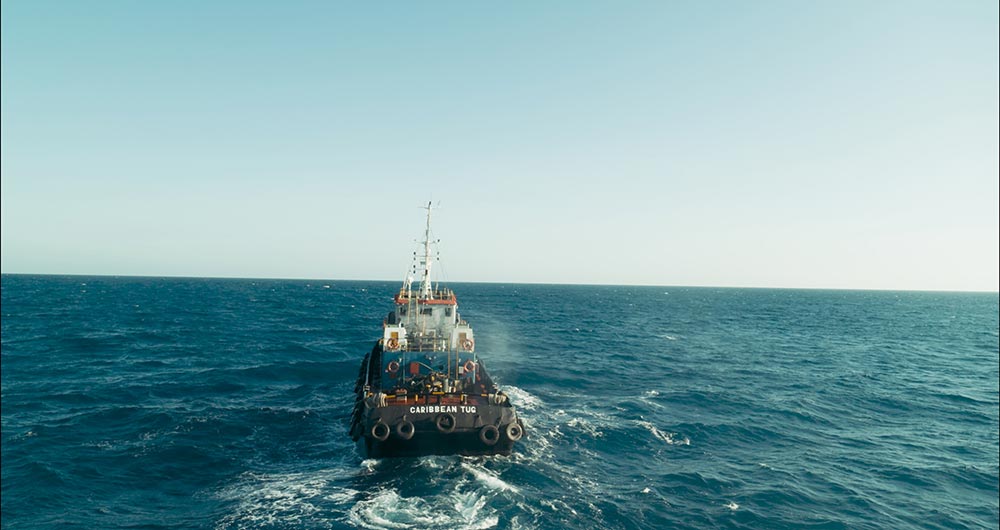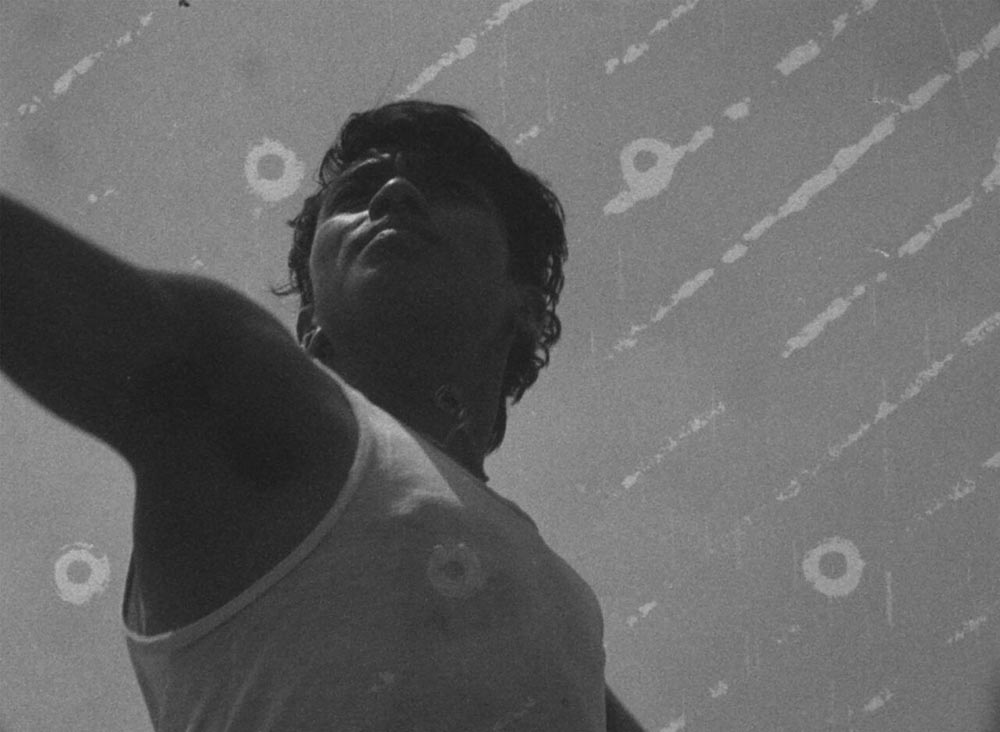There is very little writing in English about the UNAM International Film Festival (FICUNAM). The festival, which recently concluded its fourteenth edition, has become synonymous with cutting-edge filmmaking of all sorts—documentary, docufiction, narrative fiction, experimental film, and expanded cinema. When it comes to supporting films that are invested in re-thinking and re-imagining the possibilities of the medium, FICUNAM stands out as one of the most important film festivals in Latin America, along with Mar de Plata in Argentina and FICValdivia in Chile. This year—my first in attendance—it hosted its usual International Competition; “Ahora México,” a program dedicated to new Mexican films; “Competencia Aciertos,” a two-part shorts program where film students from Spanish-speaking countries could show their latest work; “Competencia Umbrales,” a section highlighting new experimental cinema made in Mexico; “Atlas,” a program of new films by auteurs from across the globe; four retrospectives; a virtual program; and, a series of talks. There were over 200 screenings. The measly 17 I attended—an unsystematic blend of titles from the International Competition, Ahora México, and the retrospective “Paul Leduc: Insurgent Symphony”—reflected an excellence in programming and introduced me to several filmmakers who remain under-appreciated here in the United States and possibly across the Global North.
Although FICUNAM takes place across several theaters that are dispersed throughout Mexico City, I spent most of my time in its main hub: UNAM’s Cultural Center. It was there that I slid from one theater into another, avoiding the sudden heatwave that coincided with my being there. From an outsider’s perspective, a sense of hominess was evident at the festival, with friendly cinephiles chumming about a college campus. The first film I saw was Paul Leduc’s Ethnocide: Notes on El Mezquital (1997). The documentary, which details the state of abject poverty experienced by the Otomi in the state of Hidalgo, Mexico, is a paragon example of Leduc’s filmmaking style: a combination of political savviness with formal ingenuity. Here, Leduc examines the many structural issues affecting the Otomi according to the alphabet. Assembled this way, the film catalogs the many problems that affect the Otomi into a legible litany of abuses, as though a cinematic mnemonic device designed to assist viewers recall Mexico’s troubled history with Indigenous communities, labor practices, and leftist politics.

In Neo Sora’s Ryuichi Sakamoto | Opus (2023), the famed composer’s final setlist acts as the film’s skeleton. The film, which opened this year’s edition of FICUNAM, felt thematically out-of-place. Yet, its patient camerawork, closeness to its subject, and non-didactic storytelling, aligned with many of the documentaries at the festival. In many ways, the film’s surprisingly gentle take on the concert film—a genre replete with bombastic scenes of showmanship—and intimate gaze set the tone for the festival, which avoided showcasing Mexican films that mimicked the pompousness of the internationally-renowned three amigos in favor of those that celebrated everyday moments and unmistakably personal situations. At least, these are the subjects of Diego Hernández’s El Mirador (2024), a micro-budget comedy about two aspiring stage actors who are cast in a big-budget film production that deals with Tijuana’s history of recent crime. The film flip flops between scenes of leisure—its leads play charades, drink beers, and sing karaoke—and interviews with Tijuana residents as they recall being caught up in the middle of a shooting or witnessing a kidnapping on their commute to work. This alternation, so typical of a country that has had to accept acts of violence to be as trivial as any other life occurrence, rings with a wicked humor. But Hernández is no cynic. His decision to dwell on the formerly addressed small acts, of which banter at a party and acting rehearsals also form a part, rather than over-emphasizing Mexico’s cartel violence (a tragically trite topic in media) points to the cleverness required of filmmakers to look beyond such a mired socio-political crisis.
Along with gestures and personal concerns, many of the films in this year’s international competition looked at the granular detail of interpersonal relationships. Payal Kapadia’s All We Imagine as Light (2024) details the lives of two female hospital workers in Mumbai. Prabha (Kani Kusruti) is married, but her husband (who may or may not be working in Germany) has become absent and her outlook on life is rather bitter as a result. Anu (Divya Prabha), who is young and frisky, starts dating a Muslim man in secrecy, fearing that her family will force them to break up given the extreme discrimination faced by Muslims in India. These dilemmas—of broken communication and impossible connection—are set against the tide of gentrification sweeping Mumbai, most notably in a subplot involving Prabha’s friend Parvaty (Chhaya Kadam), who is being threatened out of her apartment by developers whose new skyrise boasts the slogan “CLASS is a privilege for the PRIVILEGED.” After Parvaty is evicted, the film follows her, in the company of Prabha and Anu, to the former’s beachside village. It is there that All We Imagine As Light leans into a more relaxed pace and its leads find a new sense of peace away from the hustle-and-bustle of Mumbai. This retreat from the city is by no means escapist or nature fantasy. All it does is demonstrate the importance of regrouping, especially during such an atomized moment in human history. While Prabha and Anu live together, they spend most of their time on their own in Mumbai. Only at the beach are they able to sit across from one another and talk face-to-face—a powerful gesture for a film about disconnect.

Nele Wohlatz’s Sleep With Your Eyes Open (2024) continues the German filmmaker’s investigation of Chinese immigrants in South America. Here, Wohlatz trades the Buenos Aires of The Future Perfect (2016) for the coastal city of Recife in Brazil. Her film follows Kai (Liao Kai Ro), a Taiwanese tourist who stumbles upon a novel about Chinese workers living in Recife that’s been written across several cheesy postcards. Halfway through, Sleep With Your Eyes Open trades Kai’s story for the one described in the postcards, enacting a brilliant narrative slip that reflects the film’s interest in the communication gaps that come about when people do not speak the same language. As the film flips back-and-forth between the story in the postcards and Kai’s own travels through Recife, it builds itself a wholly unique mode of articulation, mirroring the type of exchange that arises when two people must work past their spoken languages in order to communicate.
Mexico Will No Longer Exist! (2024, pictured at top) presupposes it never did. The feature debut by experimental filmmaker Annalisa D. Quagliata begins with a scene taken from Book Twelve of the 16th-century Florentine Codex—an ethnographic study compiled by Friar Bernardino de Sahagún—in which two sorcerers who have been ordered to cast spells on the invading Spanish conquistadores stumble upon the god Tezcatlipoca in disguise as a drunk. He immediately reproaches them and says, “What is the use of your coming here? Mexico will never exist again?” This moment—a possible origin point for the state currently known as Mexico, which refuses to acknowledge the centuries of violence inflicted upon its indigenous population—provides Quagliata with a launch pad to interrogate the many symbols and traditions that define Mexican identity. Her firecracker of a film, which boasts a soundtrack by the Mexico City punk band Los Cogelones, was partly inspired by Dziga Vertov and Teo Hernández according to research conducted by the visual artist and film programmer Byron Davies, whose detailed writing about the film's origins and inspirations will be published in the forthcoming Fall issue of The Millennium Film Journal, of which you can read an excerpt in English here, or in Spanish here. His article further discusses the connections between Mexico Will No Longer Exist! and the films of Vertov and Hernández, as well as how the film's title invokes the Florentine Codex, Quagliata's relationship to Mexico City's famed micro-cinema La Cueva, and how her film is the bluntest cinematic assault on Mexican identity since Rubén Gámez’s La Fórmula Secreta (1965).
In Óscar Enríquez’s The Endless (2024), a three-hour documentary about Mexico’s desaparecidos—members of the population who have disappeared as a result of the ongoing war on drugs—questions of irretrievability beget grievance and inspire community-organizing. Bringing together interviews with people in Ciudad Juárez, Mexico City, and Veracruz, who have had members of their family go missing, The Endless joins a growing canon of Latin American films contending with desaparecidos and the role violence continues to play in informing national identities across the region. Cross-cutting between interviewees involved in different search campaigns, support groups, and protest movements across Mexico, the film clearly articulates the severity of its subject matter, which is estimated to have resulted in the disappearance of over 100,000 people since former President Felipe Calderón declared a war on drugs in 2006. Of peculiar interest, is how the film’s movements between Ciudad Juárez, in the north of Mexico, and Veracruz, in the south, correspond with different modes of processing these disappearances. In Juarez, Enríquez identifies a robust network of private researchers who have dedicated their lives to chronicling crimes in order to identify trends and find ways of avoiding further disappearances. Meanwhile, in Veracruz, Enríquez’s interviews yield a series of conversations about supernatural phenomena—people who had their loved ones go missing talk about seeing them in visions, feeling as though their feet are yanked at night, and consulting healers about their grief. Unintentionally or not, Enríquez draws a distinction between Mexico’s opposite ends, setting up a divide between the US-influenced debt to rationalism in the North versus the reliance on more traditional modes of coping in the South.

River of Toads (2024), which also takes place in Veracruz, details the goings-on of a small community of healers in the island of Zapoapan. Here, documentarian Juan Nuñch uses vérité footage to represent a series of stories and dreams told to him by Francisca Hernández, the main healer in the film. Although such a mix of daily portraiture and daily riffs has become commonplace in docufiction filmmaking, Nuñch’s brilliant balancing act agrees with his subjects, mirroring their own ability to have one step in the real world while maintaining another in the spirit realm. Gabriela Domínguez Ruvulcaba’s Ways to Traverse a Territory (2024) looks at another indigenous community in the south of Mexico, focusing on the daily practices of shepherds in San Juan Chamula, Chiapas. Her combination of direct capture with a series of gorgeously-framed tableaux shot on 16mm lays bare a process of transference whereby the film’s subjects take command of the camera—a technological object that has historically been used against Mexico’s indigenous communities.
Questions of agency in relation to cinema are central to both Mati Diop’s Dahomey (2024) and Nelson Carlo De Lo Santos Arias’s Pepe (2024), which played as part of the festival’s International Competition. The former is a documentary about restitution told from the perspective of a statue of King Ghézo, who is referred to as “26” throughout the film because he’s the 26th art object in the repatriation-package settled between France and Benin in 2021. In the film, he is voiced by the Haitian novelist Makenzy Orcel. His deep voice, which combines regal authority with a robotic accent, anchors the statue’s presence in myth. Such authorial fancies beg immediate questions about how to frame voiceless entities, especially when their silence is the result of imperial domination. Diop’s careful documentation of the on-campus debates surrounding the repatriated statues at the University of Abomey-Calavi emphasize the mythic and abstract value of these art-works; in turn, rendering Dahomey as a curious work without a definite agenda. History-in-the-making is Diop’s true subject here. Recognizing it as such, she intelligently avoids defining what this act of restitution means or ascribing it a definite political valence. Instead, her decision to simply bear witness and sit with the many questions such an event draws out from the public gestures at a different and currently unpopular political act: rumination.
Pepe is a whirlwind delight full of formal flourishes and narrative twists that orbits around the story of a hippopotamus that’s brought over from Namibia to Colombia by Pablo Escobar. Much like Diop, Arias also decides to give his unusual protagonist the power of speech. And like King Ghézo, Pepe speaks in an authoritative baritone, offering the audience tidbits about his tragic life. The Statue of King Ghézo, which is currently at the center of debates relating to Benin’s national identity, and Pepe, who the film makes synonymous with Escobar and his outsized role in the international drug trade during the ‘80s, both object to their status as national symbols in their respective films. Viewing Pepe and Dahomey you get the sense that Diop and Arias, whose films display a keen awareness about how symbols and rhetoric are employed in nation-building projects, gave their protagonists voices to remind viewers of the particularly violent histories both of them are tied to. As such, hearing them speak produces an act of remembering and recognizing that, as in Quagliata’s in Mexico Will No Longer Exist!, all symbols are products of definite material histories and their reinterpretation often tends toward revisionism. The films at FICUNAM this year featured symbols, but never sought to rescue them; in fact, the opposite was true. There was a dismantling of symbols, as there was one of forms. After all, degeneration gives way to regeneration and these deconstructive feats are sure to pave the way for a new cinema.



